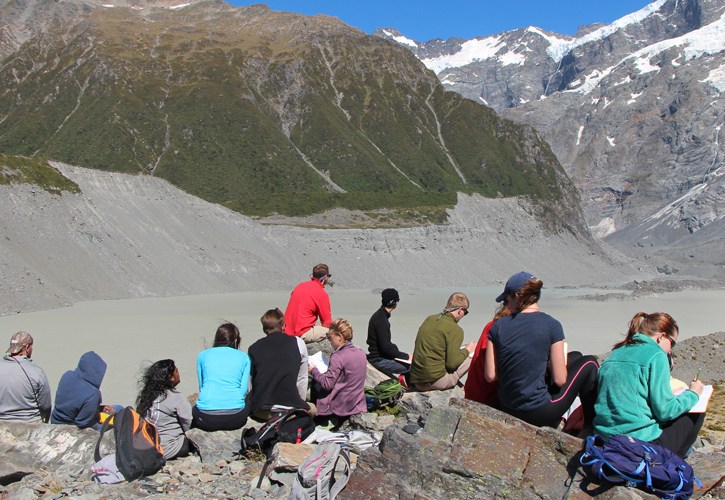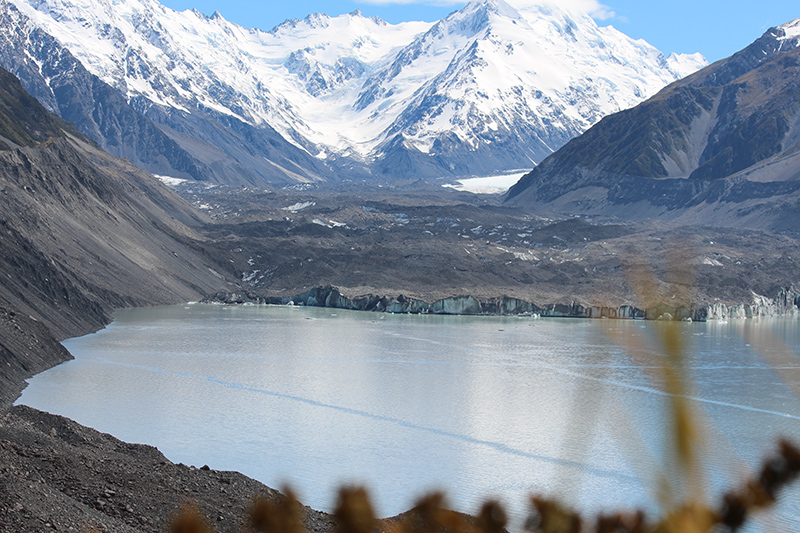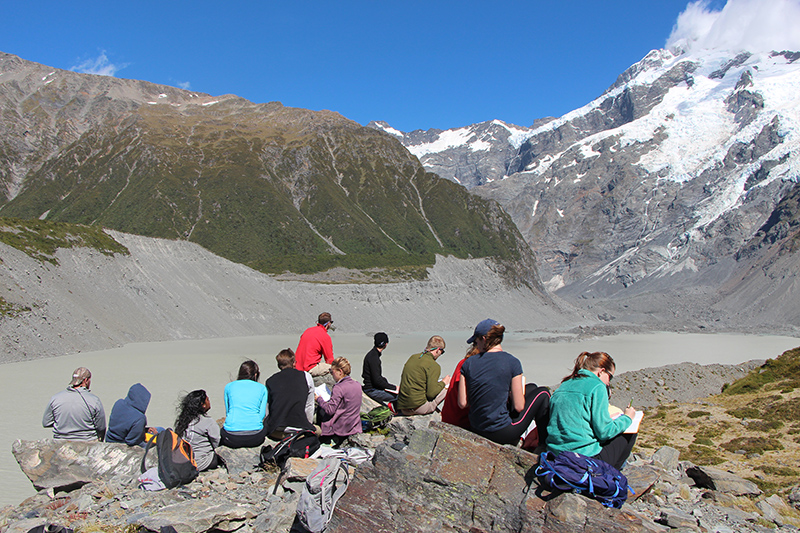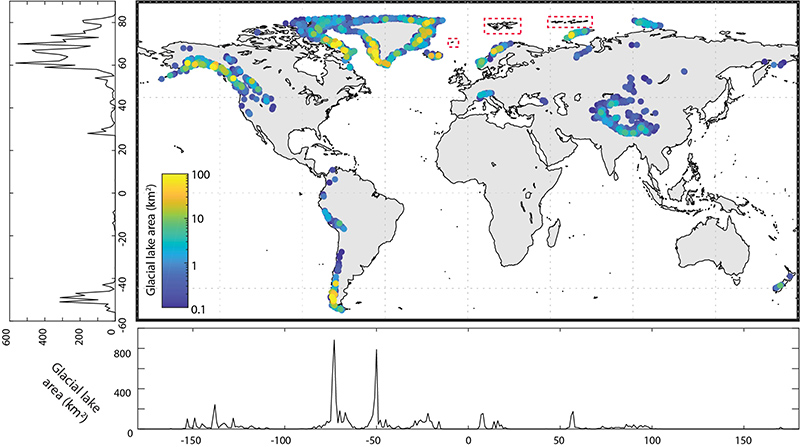College of Arts and Sciences Newsroom

UD researcher participates in first global survey of glacial lakes
By Meagan Pant
In the largest-ever study of glacial lakes, NASA-funded researchers — including University of Dayton geologist Umesh Haritashya and his student Katherine Strattman — found glacial lake volume has increased by about 50% worldwide since 1990 as glaciers melt and retreat due to climate change.
“The scope of this study and collaboration between scientists from different countries is unprecedented,” Haritashya said. “The amount of information we have been able to analyze could truly advance the science of glaciers and the impact of climate change on glaciers.
“Glaciers are retreating on a near-global scale. You often hear about this melt causing a rise in the sea level, but in addition, some of the melt water is stored in the glacial lakes that doesn’t contribute immediately to the sea level,” he said. “These glacial lakes are often not stable. They are dammed just by ice or glacial sediment called a moraine, and they pose a risk of massive floods downstream that in the last century have caused numerous deaths and destroyed villages and infrastructure.”
Haritashya, who since 2012 has received nearly $3 million in NASA funding to study glacial lakes and landslides in the Himalaya and Karakoram mountains of southeast Asia, and the team used new data analysis tools to analyze 254,795 scenes from the NASA-USGS Landsat missions, a volume of data that would not have been possible to effectively process and analyze a decade ago. This work was funded by NASA High Mountain Asia program and project co-investigator Dan Shugar from the University of Calgary led this study.
Their findings, published in Nature Climate Change, affect how researchers evaluate how much glacial meltwater reaches the oceans and contributes to sea level rise as well as evaluate hazard risks for communities downstream.



